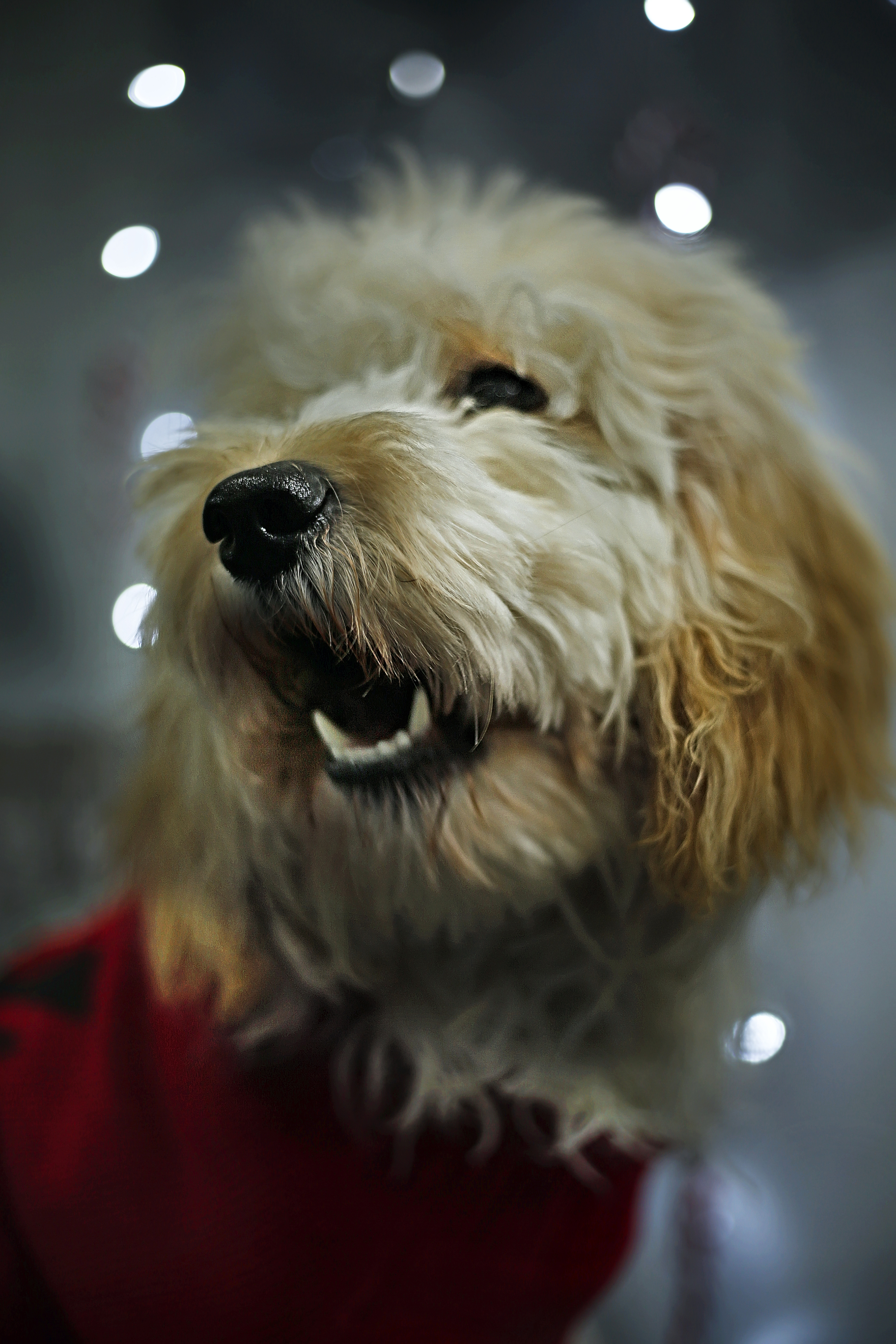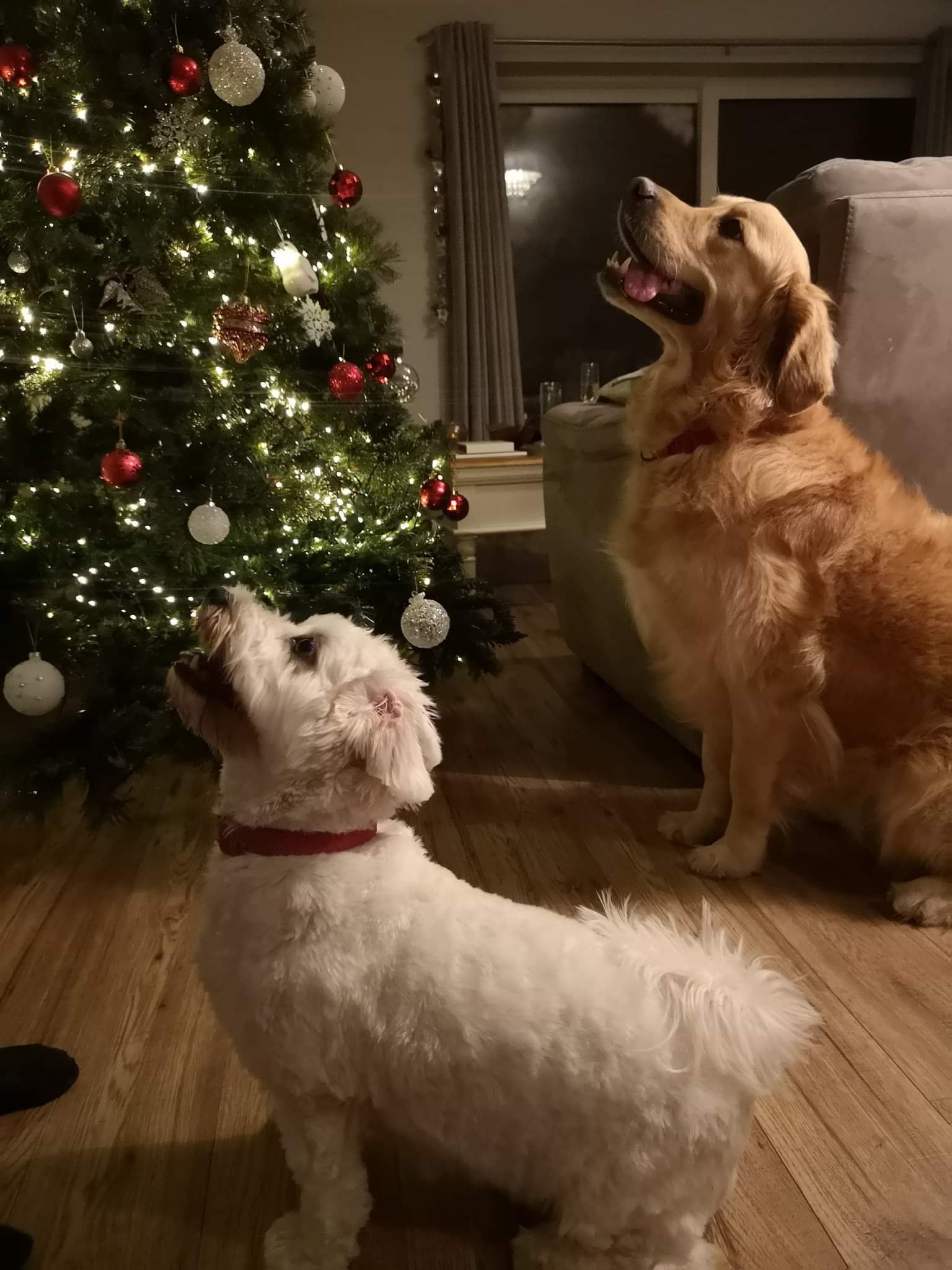Festive, furry fun! Christmas pet photography tips and tricks
Want to know the best way to photograph your furry pal over the festive period? This guide has some im-paw-tant tips

Do you love taking photos of your furry best friend, but can't quite seem to keep them interested long enough to snap the winning shot? This guide will help with tips and tricks on shooting camera-shy pets and how to make them feel at ease in front of the lens this festive season.
Almost all of us have at some point gotten the urge to dress up our pets for Christmas, and while this can be a fun way to create memories and share photos with the family, not every animal is comfortable having their picture taken or wearing a jumper. It's very important that you have a bond with your pet to recognize when they are becoming uncomfortable and when to call it quits.
• Read more: Best pet camera
My seven-month-old double-doodle pupper, Tilly, is very energetic but also extremely calm and comfortable when shooting with me. It certainly took some time and training getting her used to keeping still, wearing the odd accessory for halloween and looking directly at the camera – but practice makes pawfect!
Having done this from a young age with Tilly, she now associates a photo shoot with getting treats and attention, and doesn't mind a lens being in her close proximity. As long as you respect the boundaries of your pet and make the shoot a fun experience for them with treats, cuddles and head pats, shooting festive photos should be a piece of cake (maybe even literally!).
1) Be as quick as you can
Most pets love getting attention from their owners, but can also be overwhelmed and stressed out easily by receiving too much fuss – especially from multiple people. It is a common trait for dogs to sometimes disappear and hide away during a party or gathering if it all gets a bit much, and shoots can have this exact same effect on them.
It's important to be as quick as possible during shoots, both for the benefit of your pet remaining engaged and relaxed but also not to miss the superior shots. Accordingly…
The best camera deals, reviews, product advice, and unmissable photography news, direct to your inbox!




2) Use a fast shutter speed
Pets can become easily distracted and agitated. This makes shooting on a faster shutter speed absolutely crucial for getting the best shots. With only a few moments where your pet may look directly into the lens or perform an adorable head tilt, you certainly won't want to miss them!
Even if shooting faster shutter speeds means having to crank up the ISO, a bit of noise is a worthwhile price to pay for getting the split-second action shots of your pet acting uniquely.
3) Bokeh is bark-tastic (sorry)
It's usually a good idea to shoot at a wider aperture when photographing pets, which enables you to let in as much light as possible to shoot at fast shutter speeds for sudden movements. The other benefit of shooting wide apertures is bokeh, which when paired with pet photography bokeh makes for dreamy looking portraits that frame your furry pal beautifully.
Be careful, though, as often when using fairy lights with pets I've found that when placed too close to the subject (such as draped around their neck or directly behind them), it can cause your pet to become absorbed by the shallow depth of field and they too will become out of focus with the bokeh.




This one surely goes without saying, but please be vigilant at all times using lights and make sure your pet isn't tangled or nibbling on any cables that can overheat or become hazardous. The safety of your model should always be top priority, but especially so if it's your furry best friend.
4) Follow their lead
When shooting with pets that have a calmer temperament, or are perhaps a little bit older, try shooting at their level and follow their pace. If your subject decides it's time for a lie-down then drop to the floor with them and capture some lower angle images. You might be surprised at how well they turn out.
With my older golden retriever, I previously found it much easier to keep her interested and engaged if I got down to her position and gave her treats while snapping a shot. If your pet doesn't want to be followed, or seems anxious, then give them some space.
5) Ask for help
Patience is an absolute virtue in the world of pet photography. Try not to be discouraged if your images aren't turning out as you initially hoped; animals can be a difficult subject to work with and it always helps to have someone else assist you who can get the attention of your pet while you're busy shooting.
Having someone stand directly behind you and call your pet's name is the best method to get them to look your way. Holding a treat or toy next to the lens is another great tip of getting that eye contact that creates a winning portrait.




6) Try using a phone camera
Some pets can be super nosey – you heard about what killed the cat, right? Let them have a good sniff of any lenses or camera bodies you intend on putting near them. This can help your pet to ignore the sounds of the autofocus and shutter, and keep in position while you shoot.
For more nervous or jumpy pets it might be worth ditching the camera altogether and opting for some smartphone photography instead. A phone is something your pet may already be accustomed to, they're likely to have seen you use a phone more frequently than a chunky camera, so this might be a less intimidating approach to snapping a shot of your pet.




Read more:
Best camera phones
Best lenses for animal photography
Pet photography tips

Beth kicked off her journalistic career as a staff writer here at Digital Camera World, but has since moved over to our sister site Creative Bloq, where she covers all things tech, gaming, photography, and 3D printing. With a degree in Music Journalism and a Master's degree in Photography, Beth knows a thing or two about cameras – and you'll most likely find her photographing local gigs under the alias Bethshootsbands. She also dabbles in cosplay photography, bringing comic book fantasies to life, and uses a Canon 5DS and Sony A7III as her go-to setup.



